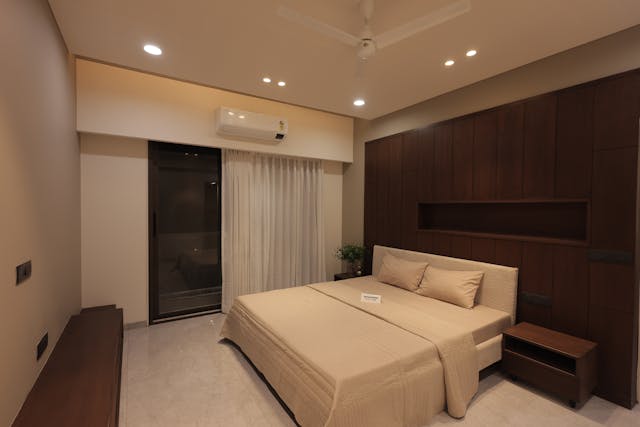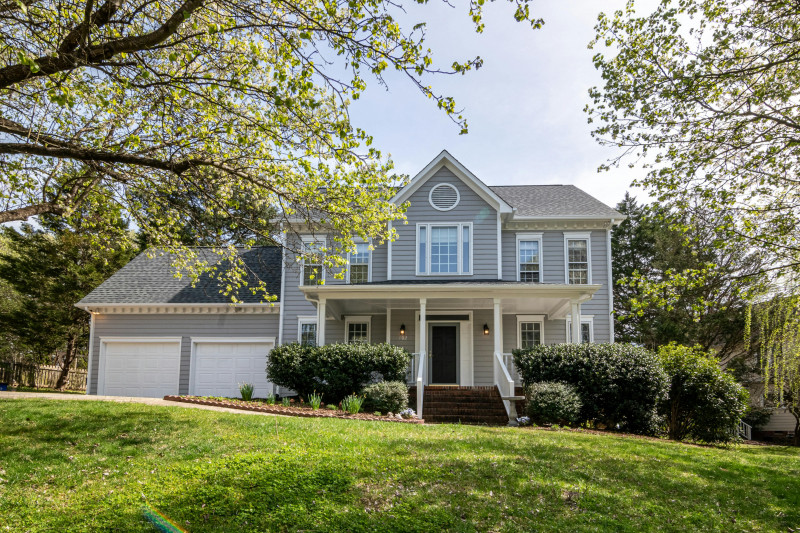This is a sponsored post.

Creating Homes That Respond to ChangingClimates
Climate patterns are no longer consistent, and homes must be able to adapt to conditions that change more often and sometimes more severely. Rising temperatures, heavier rainfall, and unpredictable seasons all have an effect on how people live day to day. A house that is built or remodeled with these challenges in mind offers comfort while also protecting the investment made into it.
Huntington is a good example of a place where such issues are very real. Summers bring heat that makes cooling systems a necessity, while storms and rainfall create their own set of demands on homes. Homeowners there know the importance of building spaces that respond to the environment. From climate control indoors to practical features outside, the goal is to create a living environment that stays comfortable and reliable no matter the season.
Indoor Systems for Temperature Shifts
The systems inside a home play a central role in keeping comfort levels steady as temperatures change. Heating and cooling setups, along with proper ventilation, allow people to maintain consistency during hot summers and colder months. A well-planned system reduces energy waste and makes living spaces more pleasant, even when outdoor conditions fluctuate. AC systems are particularly essential to homeowners witnessing rising temperatures.
Working with Huntington air conditioning companies, like Varsity Home Service, gives homeowners access to solutions tailored to local conditions. These professionals can recommend the right size, type, and placement of systems that fit the climate. They also provide guidance on regular upkeep, which keeps systems working efficiently over time.
Shading for Seasonal Comfort
Overhangs, pergolas, and exterior shades block direct sunlight, reducing indoor heat without closing off natural light completely. Trees and landscaping can also serve as natural shade, cooling outdoor areas while improving energy efficiency indoors.
During cooler seasons, shading can be planned in a way that still allows sunlight to reach inside, offering natural warmth. This thoughtful balance helps homeowners stay comfortable throughout the year. Adding shading features during construction or renovation is a practical step toward reducing reliance on cooling systems while still keeping homes bright and inviting.
Water Use and Conservation
Water use is a growing concern in many communities, and home design plays a role in how resources are managed. Homes that are built with efficient plumbing and irrigation systems reduce waste while still meeting daily needs. Low-flow fixtures, dual-flush toilets, and updated appliances support water conservation without compromising convenience.
Outdoor spaces also benefit from efficient water use. Drip irrigation systems, rainwater collection, and landscaping with native plants lower the demand for water and create more sustainable surroundings. Incorporating these features into home design protects resources while also lowering utility costs for homeowners.
Roofs for Weather Patterns
The roof is one of the most important parts of a home when it comes to dealing with changing climates. A well-built roof shields the structure from sun, rain, and wind while contributing to energy efficiency.
Materials chosen for the roof need to withstand local weather conditions and last for many years without frequent replacement.
In areas where heavy rains and storms are common, roofs designed with durability and proper slope reduce the risk of leaks and damage. Investing in strong roofing materials and professional installation helps maintain the integrity of the entire home.
Drainage for Heavy Rainfall
Drainage is another key part of protecting homes in places where rainfall can be heavy. Without proper drainage, water can collect around the foundation, seep into basements, or damage outdoor spaces. A well-planned drainage system directs water away from the structure and prevents long-term issues that are often costly to repair.
This can be achieved with features like sloped landscaping, French drains, or modern gutter systems. Each of these elements works together to keep water moving in the right direction. Homeowners who take the time to invest in good drainage are better prepared for unpredictable weather and avoid many of the problems that come from standing water.
Windows for Light and Heat
Windows have an impact on both the comfort and efficiency of a home. They allow natural light to brighten indoor spaces, which reduces the need for artificial lighting during the day. At the same time, windows can also be a source of heat gain in the summer and heat loss in the winter if they are not designed properly.
Energy-efficient windows with double or triple panes help maintain indoor temperatures. Strategic placement can also make a difference, allowing sunlight into main areas while reducing exposure during peak heat.
Landscaping for Seasonal Shifts
Outdoor areas contribute more to home comfort than many people realize. Landscaping that takes the seasons into account can provide shade, improve drainage, and support the home’s overall climate readiness. Planting trees in the right locations offers shade in summer while leaving room for sunlight in winter.
Using native plants reduces water needs and makes gardens easier to maintain. Seasonal planning also creates spaces that remain usable year-round, whether for relaxation or gatherings.
Renewable Energy Integration
Energy use is closely tied to how homes respond to climate change. Incorporating renewable energy sources like solar panels helps reduce dependence on traditional grids and provides stability during outages.
Homes designed with renewable energy in mind also contribute to lowering overall environmental impact. Even small steps, such as installing solar water heaters or pairing solar systems with efficient appliances, make a noticeable difference. Renewable energy turns homes into self-supporting environments that are better equipped for the future.
Balancing Indoor Humidity
Humidity levels indoors affect both comfort and health. High humidity can cause mold and damage to finishes, while low humidity can cause dryness and discomfort. Balancing these levels is important for creating a stable indoor environment.
Ventilation systems, dehumidifiers, and material choices help maintain the right balance. For example, proper insulation and air circulation reduce the risks that come with moisture buildup. Homes that maintain steady humidity levels remain healthier and more comfortable in all seasons.
Using Climate Data in Planning
Designing a home that responds to changing climates starts with knowing the conditions of the area. Local climate data provides valuable information about rainfall, temperature ranges, and seasonal patterns. Builders and homeowners can use this information to make smarter choices about materials and layouts.
For example, areas with higher rainfall might prioritize stronger drainage systems, while regions with long summers would benefit from stronger cooling solutions. Factoring in local data creates homes that are more resilient and better suited to the real conditions they face.
As climates continue to shift, designing houses that adapt to these changes is essential. From strong roofing and effective drainage to efficient systems and sustainable practices, each choice adds resilience and comfort. Creating spaces that adjust to changing conditions allows families to live more comfortably, securely, and sustainably, no matter what the weather brings.

Hi there! I am Emily Evert, the owner of Emily Reviews. I am 28 and live in a small town in Michigan with my boyfriend Ryan and our two pugs. I have a large family and I adore my nieces and nephews. I love reading memoirs, and learning about child development and psychology. I love watching The Game of Thrones, Teen Mom, Sister Wives and Veep. I like listening to Jason Isbell, John Prine, and other alt-country or Americana music. I created Emily Reviews as a creative outlet to share my life and the products that I love with others.
This post currently has no responses.




















Leave a Reply